Amazingly original 1963 Austin FG-series fire appliance
Posted by Chris Graham on 30th November 2022
Ian Shaw assess the design and functionality of a 1963 Austin FG-series fire appliance that was originally built for Cornwall Fire Brigade.
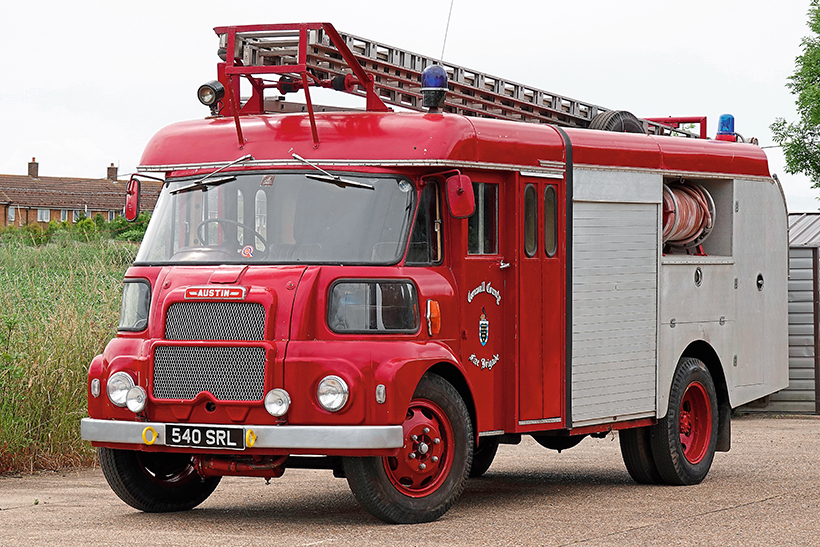
This 1963 Austin FG-Series fire appliance belongs to Kevin Dennis, and is currently for sale.
The BMC FG Series of Austin and Morris-derived light commercials was one of the longest-serving and most versatile of the post-war era. Having featured Len Wilkes’ pristine Morris FG K30 in the February 2022 issue of Heritage Commercials, we thought we’d take a look at the other side of the thruppenny bit, so to speak.
Firstly, although shared designs within BMC, the two companies were always keen to maintain their own identities so here we have an Austin. Almost at the top of the FG series in terms of weight, and previously carrying Austin S200 designation, the collaborative FG nomenclature was in place before the BMC amalgamation of 1968.
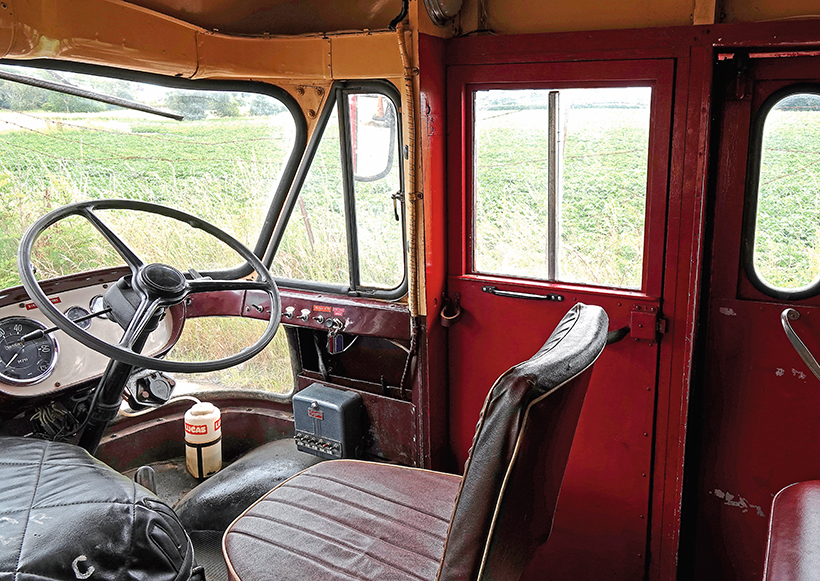
Drake Motors of Plymouth crew cab…
This one hails from 1963 and is built upon the heavy-duty FGK 80 chassis. This was designated as a nominal four-ton truck and was designed for a 140 cwt (7,112kg) gross vehicle weight. It sits upon a 12ft 1in (3.68m) wheelbase with an overall chassis length of 19ft 8in (5.98m) and a nominal body length of 20ft 8in (6.28m). This would relate to a standard box or dropside body but, for the fire appliance the versatility of the FGK comes to the fore, over and above its base dimensions.
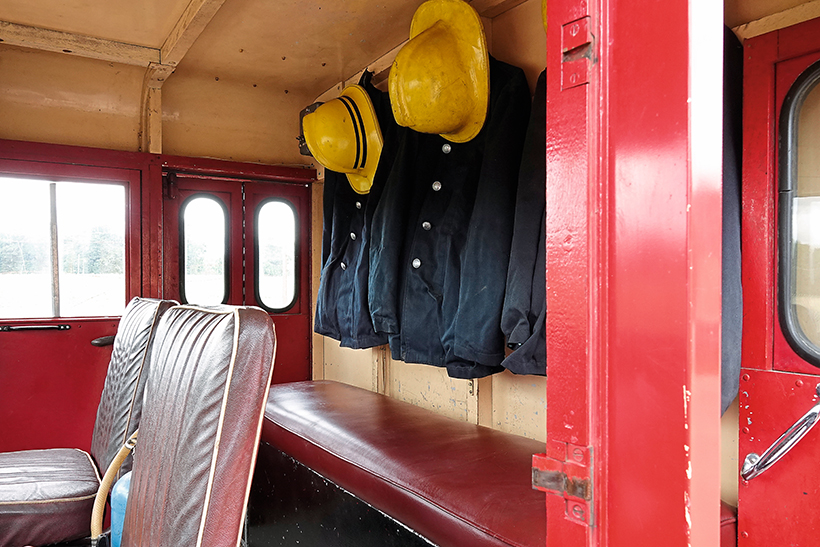
… has folding rear doors.
The first and most obvious difference compared to the standard BMC FGK is the fact the innovative and advanced cab design had to be somewhat compromised. This application called for a crew cab, of five seats and sufficient internal capacity for clothing and personal equipment. As each fire brigade would have its own individual requirements, the crew cab would generally be constructed by a local coachbuilder on a ‘Chassis Front End’, latterly referred to as a chassis cowl. This would consist of the frontal mask of the vehicle, the windscreen frame, the two front quarter windows and the cab side windows.
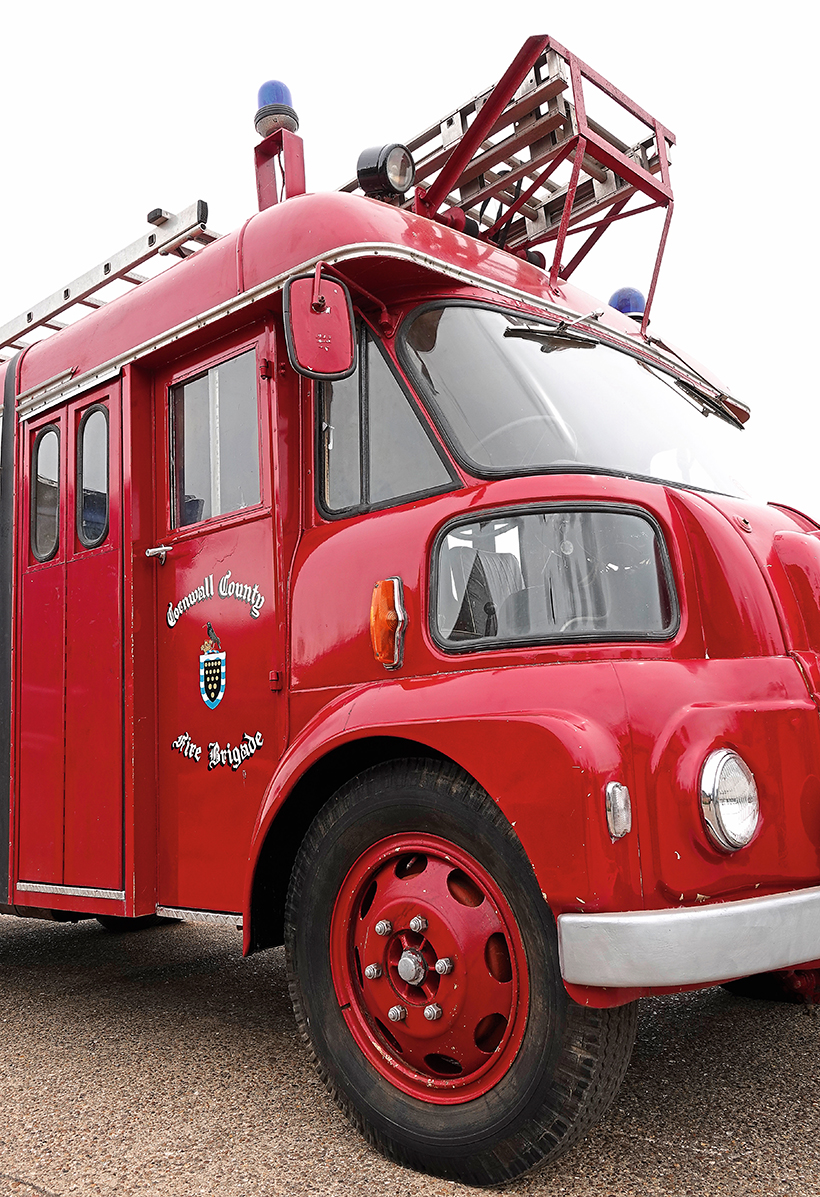
Crew cab retains the familiar FG front end.
The design of the FG cab, perhaps by happy accident, meant the rearward located cab doors were not part of the Chassis Front End package, and neither was the rear cab wall or window. This particular example, built for Cornwall Fire Brigade, was constructed by Drake Motors Coachbuilders of Plymouth. This one – 540 SRL – is one of only two appliances that Cornwall Fire Brigade ever had with Drake Motors cabs, its sister being 233 NAF. The crew cab is spacious, with the cab doors being conventional front-hinged items, a necessary departure from the FG’s unconventional rear-hinged design which opens within the outer envelope of the body width. Here that consideration is lost but, interestingly, the Drake Motors-built cab rear doors achieve much the same, being centre-hinged inward-folding items. A nice nod to the FG cab’s celebrated party piece.
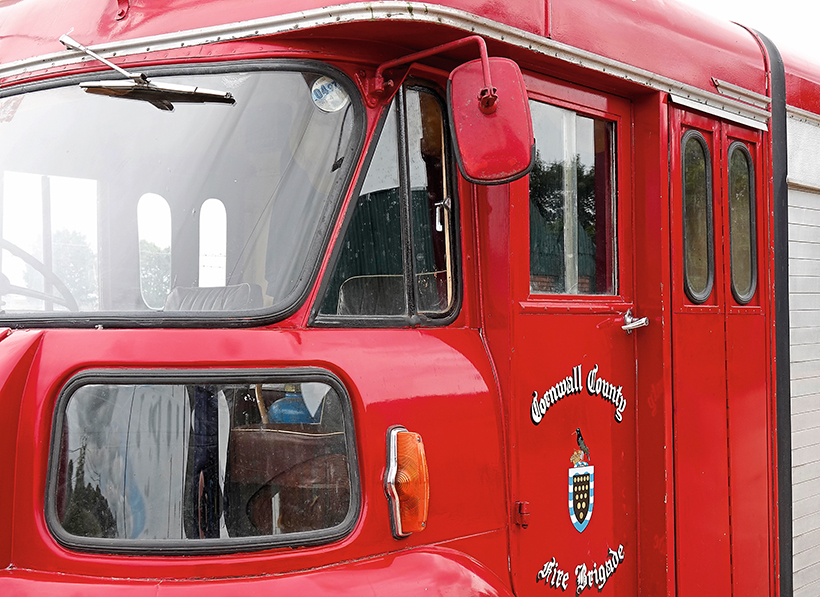
Power came courtesy of Austin’s 3,991cc inline six-cylinder OHV petrol engine. The all cast-iron unit was well-proven, being developed as it was from the wartime Austin K2 military ambulance and larger K9 truck, then initially as a 3,460cc D-Series car engine, and was further enhanced into the K-Series truck unit which saw service until it was replaced by the family of BMC C-Series engines. Most notably the D-Series. in both 3.4- and 4-litre guises, powered the Austin Sheerline and Princess cars, the Jensen 541 and the Vanden Plas Princess Limousine. Power outputs developed through its life from an initial 60 and 68hp in the 3.4-litre unit, while in the 4-litre version, it produced 87hp until a change from a Zenith to Stromberg carburettor saw it hit the magic 100hp output.
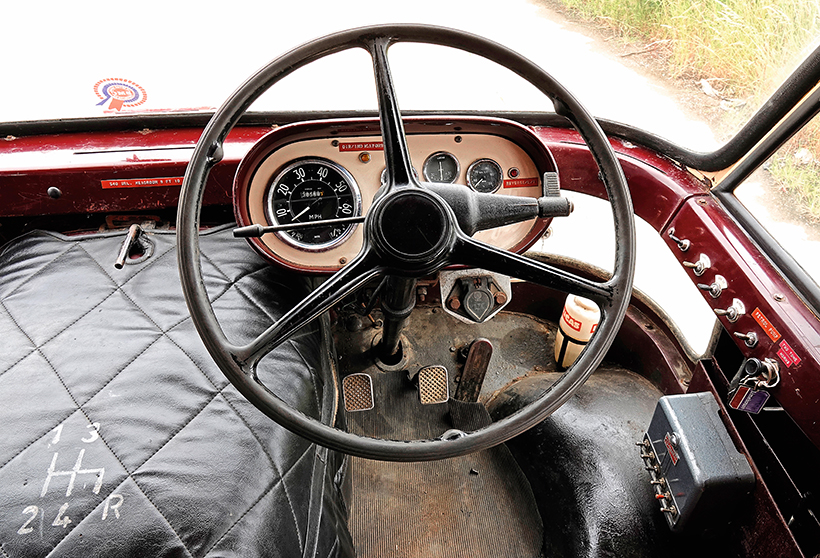
Typical FG cab apart from forward-hinged doors.
It utilised an 11in single-plate clutch with a four-speed gearbox featuring synchromesh on first, with constant mesh for the upper three ratios. The standard fully-floating rear axle final drive ratio was 5.86:1, while both petrol and diesel-engined models could be specified with a lower, 6.67:1 ratio which would favour either urban delivery work or more arduous duty such as on a tipper. But the petrol-engined versions could also be specified with a much higher 4.71:1 final drive. With fourth gear being a straight 1:1 and without overdrive option, this would make the best overall gearing for a fire appliance offering some 21.48mph/1000rpm, and a theoretical maximum speed in excess of 60mph! Servo assisted brakes as standard would have been a welcome inclusion for the specification too, with the FGK 80 boasting some 275 sq in of friction surface. The commonplace 7.00 – 20in tyres, twins at the rear, completed the picture.
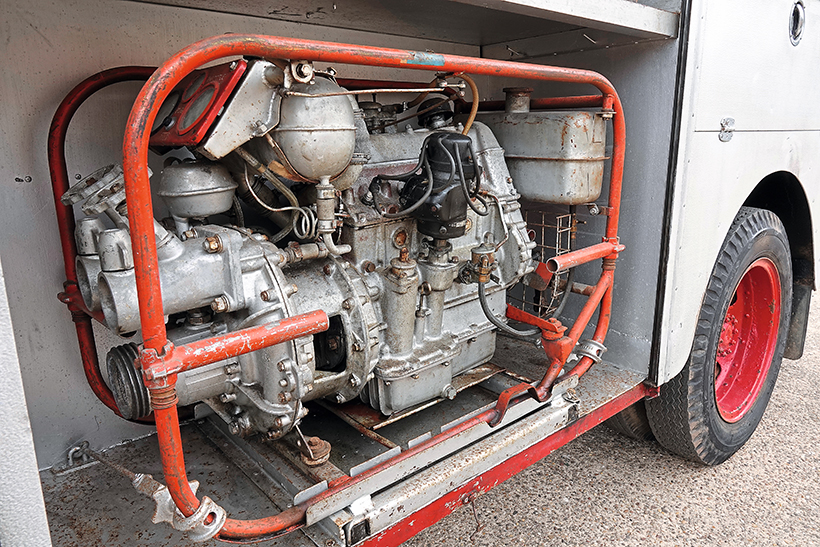
Portable pump and hose reel look original, unlikely to pass current certification!
Pump appliance 540 SRL entered service with Cornwall County Fire Brigade in 1963 at St. Columb fire station, where it served until 1972. It then moved to Liskeard fire station where it completed a five-year stint until being moved in 1977 to ‘A’ Division (West Cornwall) in the Driver Training department before leaving the service completely by 1980. Throughout its service life it was maintained by the Brigade’s workshops which were located behind Camborne fire station from 1963 to 2015. The sister appliance, 233 NAF which was also built by Drake Motors coachbuilders, stayed with Cornwall County fire brigade until 1984, having been converted from a pumping appliance to a foam carrier.
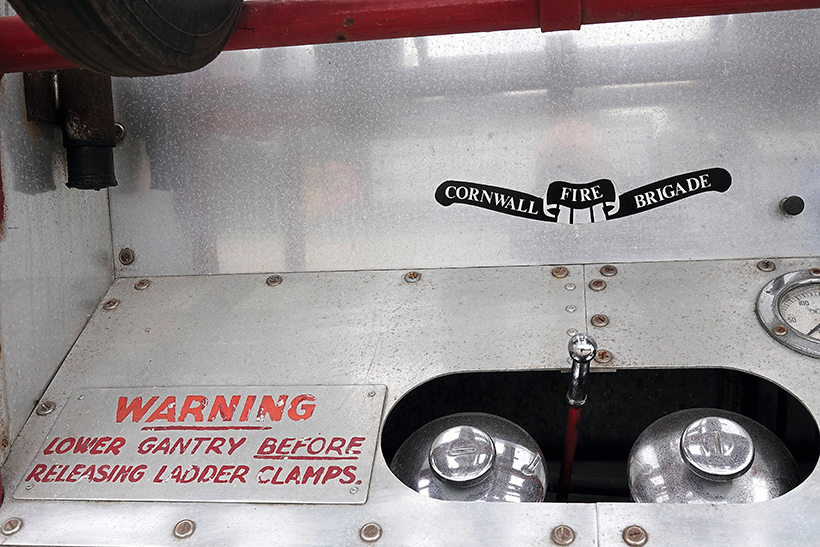
Alongside these pump appliances, Cornwall Brigade also had a 1962 Austin FGK80 GPL (Fire Service General Purpose Lorry). Registered 452 PRL, it’s thought to have been supplied new to Cornwall County Fire Brigade in 1962 as a General Purpose Lorry and Foam Carrier, and also based at Camborne. Originally, having a standard dropside body, it was transferred to Falmouth and later in its service here, it’s believed to have been fitted with a tail lift, before leaving the service around October 1975.
540 SRL has retained virtually all of its equipment, from wooden ladders, to crew tunics and helmets and an auxiliary portable pump. These were a commonplace addition, particularly in rural brigades, and the majority were Godiva units, not dissimilar to the FF trailer-mounted devices which had seen service throughout World War Two. Godiva Fire Pumps started life in the late 1930s as a division of Coventry Climax Engines Ltd, supplying a number of motor companies, including Lotus. By 1950, Godiva had launched the FWP, the first lightweight, single-stage pump using corrosion-resistant aluminium alloys with a new 1,022cc lightweight engine. Its reliability was proven for all the world to see, between 1958 and 1965 more than 50% of World Championship Grands Prix were won with Coventry Climax engines.

All the original equipment still resides on the appliance.
Having left the service of Cornwall County Fire Brigade, 540 SRL embarked on a quieter life in civvy street, undergoing a full restoration before finding its current home in the collection of Kevin Dennis. Well-known commercial vehicle collector, haulier and Leyland T45 devotee, Kevin has kept the appliance in show condition, running it on a regular basis.
The Austin straight-six petrol fires-up instantly and its smooth, muted idle is no louder than you’d expect from one of the limousines this engine family used to propel. It still has a decent level of performance as Kevin demonstrated during the photography session, much to the surprise of the lads working at the far end of the yard!
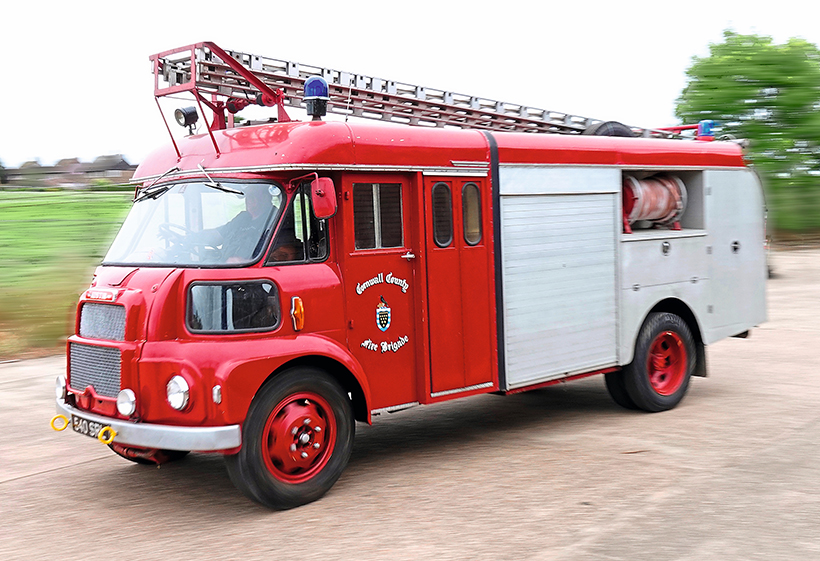
Off on a ‘shout’ – not really, it’s in the yard!
The Austin FGK forms part of an interesting mix in his stable, and closes a chapter of fire appliance designs. The 1970s would be the start of the diesel era, with tenders built upon heavier chassis and with more powerful engines, usually borrowed from sister models several rungs up the GVW scale. The FG cab design would die out too, being replaced by more conventional, much less innovative boxes as BMC and then BL increasingly placed budget before brilliance, and fire engines such as this are a fitting illustration of the BMC FG’s inherent flexibility.
The author wishes to thank vehicle owner Kevin Dennis for his time and assistance, Michael Sones of Cornwall Fire and Rescue Service for trawling through the records relating to the 1960s fleet, Nigel Harrison of the Morris Commercial Club with his BMC-wide knowledge assisting in identifying the chassis type and Len Wilkes for access to his BMC FG archive.
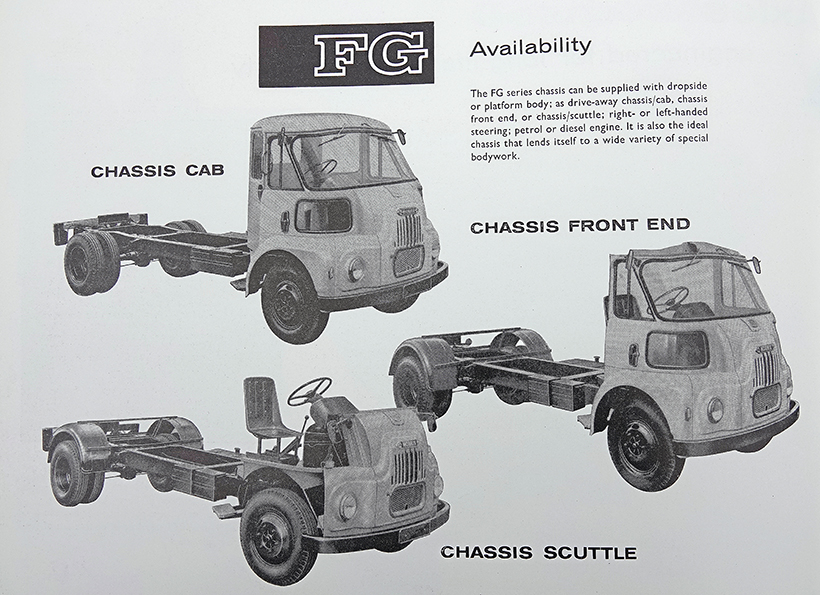
Fire appliance would have left the Austin factory as a Chassis Front End.
The vehicle is now up for sale, and interested parties should contact Kevin Dennis directly on: 07759 473380.
This feature comes from a recent issue of Heritage Commercials, and you can get a money-saving subscription to this magazine simply by clicking HERE
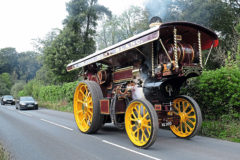
Previous Post
Fowler Super Lion B6 finds a new home in Cornwall
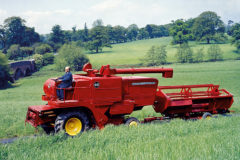
Next Post
Some of the finest combine harvesters!



